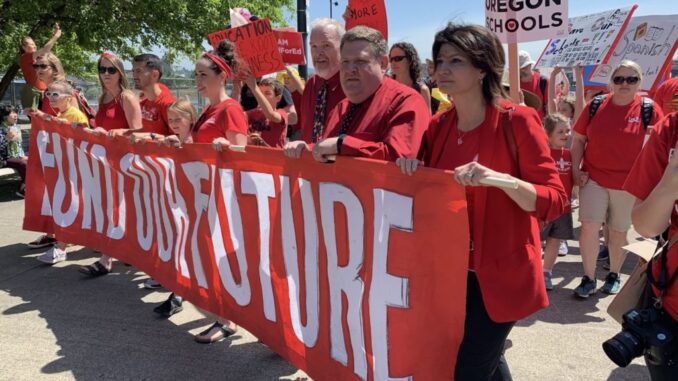
Estimated reading time: 8 minutes
The 2022–2023 school year has been significant for my development as an educator. I completed my graduate program with a master’s degree in teaching and got a job as a long-term substitute, teaching World Studies and U.S. History and advising my site’s Indigenous affinity club. Throughout my life, I’ve been in various roles as an educator, but this was my first year as a certified teacher. I’ve learned so much from my experiences in the classroom as well as in the breakroom and department meetings. Once I finished my program, there was so much I couldn’t have anticipated when I got my first job. I had just come from a program where all my classmates were bright-eyed and bushy-tailed, and into a school barely holding onto its staff and students. It’s not that our student teaching didn’t humble us and even give some of us a reason to be jaded, but in hindsight, most of our mentors did an excellent job shielding us from the more overwhelming aspects of this job. Popular discourse in the United States complains about how ineffective and lacking our education system is, but after this year, I believe I have a much better insight into why that is.
School is the singular place in American society where all manner of social reproduction is expected and taken for granted. Schools shelter, feed, and sometimes clothe their students. Educators are expected to assume the roles of teacher, mentor, counselor, and even friend and parent. Professionally, there are too many hats for one person to wear, boundaries that are pushed, and generally too many responsibilities for one person to bear. Tragically, it’s at the discretion of each individual educator as to how much they will give of themselves to their job.
Such is the case for nearly all aspects of education. How many school events will you volunteer your already scarce time and energy at? How will you configure your classroom furniture to be open and inviting to all students? How will you implement accommodations to keep vulnerable kids from falling through the cracks? How frequently are you contacting home? How often are you meeting one-on-one with your students? Are you advising a club? How are you conveying to your students that you are a safe person while not alerting the reactionary students and parents? Are you interrupting bigotry and implementing restorative practices?
The list of questions is endless, and all answers are ultimately for each individual teacher to decide.
As more and more aspects of social life are privatized and made inaccessible to the poor, public schools have become a final bastion of public life that can help many families meet some of their most basic needs. But, of course, public schools are themselves under threat from privatization, with charter schools and traditional private schools in addition to a steady increase in homeschooling — all of which ultimately steal funds away from public schools. We are called to do more with less, and the demands and scarcity of resources are increasing daily.
This is not to mention the societal threats that plague our schools. American fascism in crisis has resulted in the constant barrage of attacks from the far-right against educators, championing a delusional conspiracy theory that educators are “grooming” their children and making them gay or “woke” (anti-racist) — or worse yet, both! These attacks are not only launched online; the threat of violence is all too real: angry mobs instigating fights, such as the incident in Glendale, California, where a teacher was put on leave for speaking out against transphobia at a School Board meeting; or school shooters whose manifestos clearly lay out their bigotry, such as the May 2, 2022 shooting at Robb Elementary in Uvalde, Texas. Educators have lost their jobs, have been severely injured, or even been killed for their conviction to create a more just and equitable world.
Educators are exhausted. For our sacrifice to public service, we are called upon to give even more while the mass media demonizes us and our profession. The problem isn’t that educators care too much or that educators don’t actually believe in the social justice we try to implement in our classrooms — to the contrary! It is precisely because of our dedication to service, social justice, and the youth that so many of us chose this profession in the first place! But, it’s also the reason our deteriorating society can exploit us so.
This is not to say we should abandon our shared beliefs and morals or our students’ and families’ needs. We would never abandon them. Educators deeply understand the enormous magnitude of the task that stands before us, and we know the necessity of taking on that challenge. So many of our students face struggles that could be easily solved with proper funding, and so, the “solutions” often presented are unsustainable and, regrettably, sometimes the only option available. At our lowest points, when we are overwhelmed by a system designed to work against us, this necessary task seems insurmountable.
But we will not give in; we will not falter; and we will not cave to fascist reaction. We will win! The future we desire is within our grasp — we need only reach out and seize it. How will we achieve this victory? Only through a stalwart and unified labor movement — through our unions. The cure to the plague of fascist reaction is solidarity. We must unite and work together to achieve our goals!
Traditionally, most will think of the union simply as a negotiating body to get a better contract — an increase in pay. This is true, but a union can also accomplish so much more. We understand just how much work needs to be done inside our schools, but in order to begin that work in earnest, we need to relieve some of the pressure and return most of the social services our schools provide to the broader public sphere. Educators must fight for more than just a better contract for ourselves — solidarity is the key!
We are not alone in this struggle. In the fight for educator needs and the welfare of the families we serve, we are also fighting for worker rights more broadly, as well as the rights of children. In linking our struggle with our fellow workers, we can win and create a more sustainable and democratic society in the process. For this, we can look at the history of the Chicago Teachers Union. Since the 19th century, educators in Chicago have organized and fought for the needs of the people. In his article, “A People’s History of the Chicago Teachers Union,” Rethinking Schools editor, Jesse Hagopian, illustrates the necessity of courageous and unswerving union organization. It is in this history of those who came before us, and those who carry on their legacy today, we can find not only the lessons of how to tackle the tasks at hand, but the strength to continue the struggle.
Learning from these examples, our immediate goals become more evident. Who stands with us? And who of those that are in opposition could become an ally? What can we do to support our community? To this question, there are infinite answers, but some examples: rallying against an anti-work bill, raising funds for an organization that helps the unhoused, collecting and distributing meals to families during the summer, rallying to support our worker-siblings who are on strike, etc. Our unions must unite the workers it represents and the families and communities we serve.
Our struggles are all so deeply intertwined, and it is the process of atomization and alienation that created these horrible conditions we yearn to rid ourselves of. Only through solidarity and unity of action can we successfully fight back and win!

